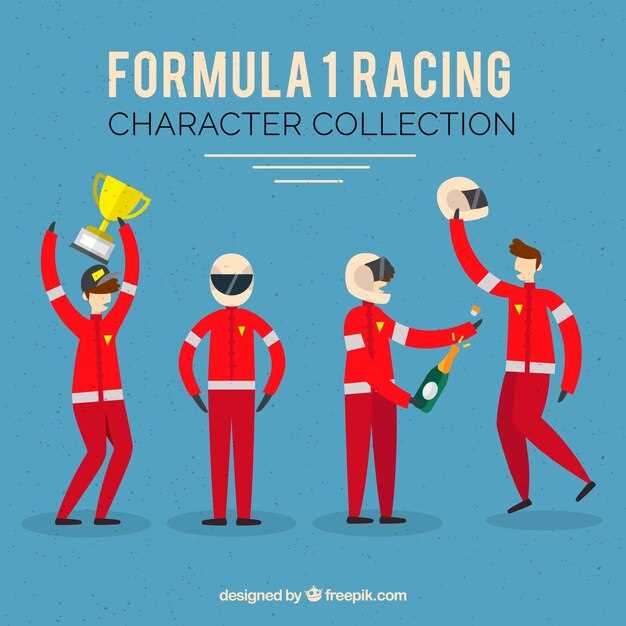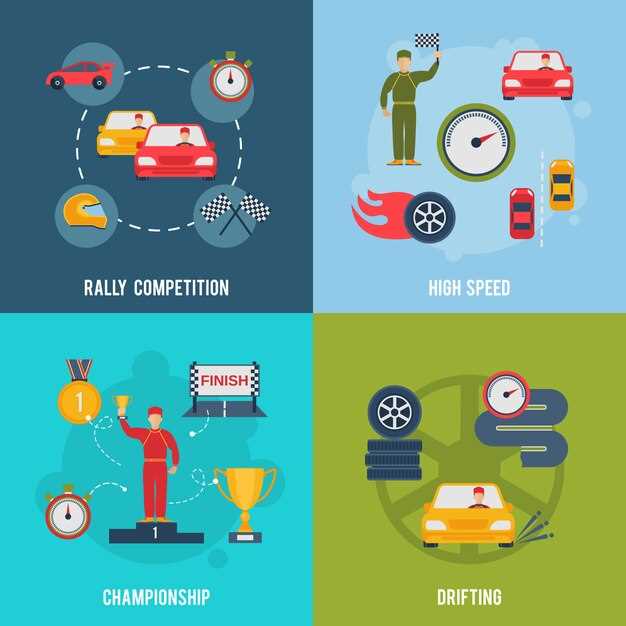
In the high-speed world of motorsport, crashes are an inevitable reality that teams, drivers, and organizers must contend with. The importance of having well-defined procedures following such incidents cannot be overstated. These protocols ensure the safety of participants and facilitate a swift and efficient response to emergencies on the track.
Post-incident protocols serve multiple purposes, including assessing the condition of the drivers involved in a crash, managing the recovery of vehicles, and maintaining the integrity of the race itself. Each racing organization has established specific procedures tailored to their events, which are designed to minimize chaos and confusion during critical moments.
Effective management of a crash not only mitigates potential dangers on the track but also upholds the reputation of the sport. By following these post-incident procedures, motorsport officials can ensure that safety remains the top priority while allowing races to resume in a timely manner. Understanding the intricacies of these protocols is essential for anyone involved in the motorsport industry.
Immediate Actions After a Crash: Ensuring Safety and Communication
Following a crash in motorsport events, the first priority is ensuring the safety of drivers, crew members, and spectators. The initial procedures involve rapid assessment of the situation. Race officials must promptly determine the severity of the incident and the condition of any individuals involved. Immediate medical assistance should be dispatched if necessary, ensuring that first responders are on-site as quickly as possible.
Next, communication plays a critical role in managing the situation effectively. Race control must utilize radio systems to broadcast information to all teams and personnel, informing them of the incident and outlining the next steps. This communication aids in managing expectations and helps to maintain order during the recovery phase.
During recovery operations, it is essential to secure the crash site to prevent additional accidents. Barriers and signs must be repositioned to keep onlookers a safe distance away. Recovery teams should be prepared to remove damaged vehicles and debris swiftly while ensuring minimal disruption to the event schedule.
Post-incident reviews are vital for analyzing the causes of the crash and the effectiveness of the response. This review process helps to refine procedures and enhance overall safety for future events. Every incident is an opportunity to improve recovery tactics and communication strategies, ultimately contributing to a safer environment in motorsport.
Investigation and Data Analysis: Learning from Incident Reports

In motorsport, the aftermath of a crash often involves rigorous investigation and data analysis to ensure safety and prevent future incidents. These procedures are essential to understand the contributing factors that led to the event and to enhance overall competition safety.
The investigation typically begins with gathering factual data from the incident scene. This includes reviewing telemetry, video footage, and witness accounts. Data from the vehicles involved, such as speed, braking patterns, and driver inputs, plays a crucial role in identifying the technical aspects of the crash.
Following the data collection, a detailed analysis is conducted to pinpoint the causes of the crash. Investigators examine the conditions surrounding the incident, including track layout, weather conditions, and driver behavior. This analysis aims to understand not just what happened, but why it occurred, highlighting any procedural shortcomings or mechanical failures.
Incident reports generated during this phase are vital for drawing lessons from crashes. These reports often contain recommendations for modifications in racing procedures, vehicle design, or track safety measures. By addressing these recommendations, motorsport governing bodies can refine safety protocols and thereby reduce the likelihood of similar incidents in the future.
Ultimately, the goal of investigation and data analysis is to foster a culture of learning within motorsports. By thoroughly understanding past incidents, teams and organizations can enhance their safety measures, allowing drivers to compete with greater confidence in safer environments.
Rehabilitation of Equipment and Personnel: Restoration Strategies

In the aftermath of a crash during a motorsport event, the recovery process encompasses both the rehabilitation of equipment and the well-being of personnel involved. Efficient restoration strategies are crucial to ensuring that operations can resume safely and swiftly.
For equipment, the first step involves a thorough assessment of the damage. Teams must conduct detailed inspections to evaluate both visible and latent issues. Once the extent of the damage is determined, a strategic plan is developed focusing on repairs or replacements necessary to return the equipment to its optimal condition. Essential components may require immediate attention, while peripheral damage can be scheduled for subsequent action. This prioritization helps in managing resources effectively and minimizing any downtime.
Furthermore, recovery involves utilizing specialized tools and techniques tailored for specific types of equipment. For example, composite materials in racing cars may demand unique repair methodologies, while electronic systems require diagnostic equipment to ensure functionality. The integration of these tailored solutions enhances the restoration timeline and quality of the recovery.
On the other hand, personnel recovery is equally vital. Following an incident, it’s essential to monitor the physical and psychological health of all team members. Providing access to medical assessments and psychological support services is critical in addressing both immediate injuries and longer-term mental health concerns. Workshops and counseling can assist those who experience trauma, fostering an environment where personnel feel supported and valued.
Additionally, debriefing sessions following a crash play a significant role in rehabilitation. These discussions allow team members to analyze what occurred, share feelings, and contribute to a collective understanding of the incident. Such initiatives foster resilience within the team, encouraging open communication and camaraderie as they rebuild their confidence for future events.
In conclusion, effective restoration strategies for both equipment and personnel are integral to the rehabilitation process post-incident. By prioritizing thorough assessments, utilizing appropriate recovery techniques, and supporting team members emotionally, motorsport organizations can navigate the complexities of crashes and facilitate a robust return to competitive action.












